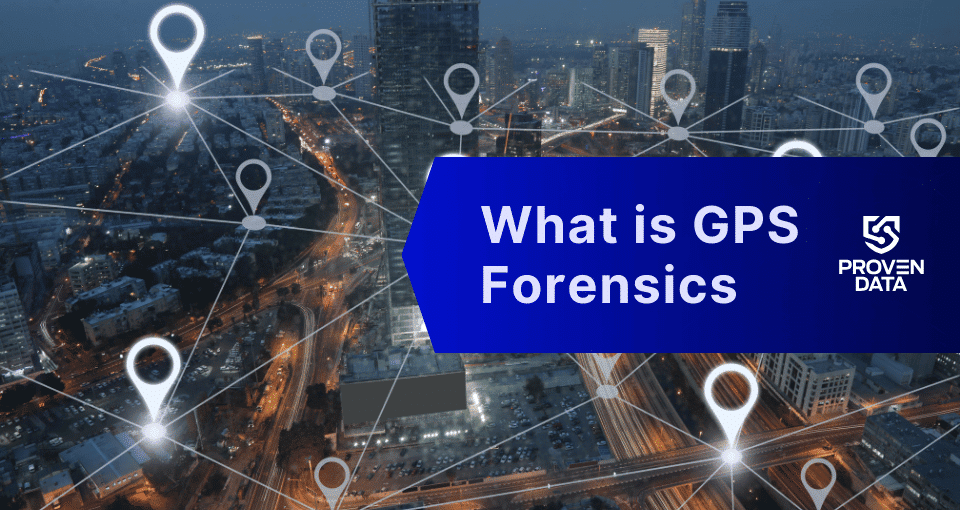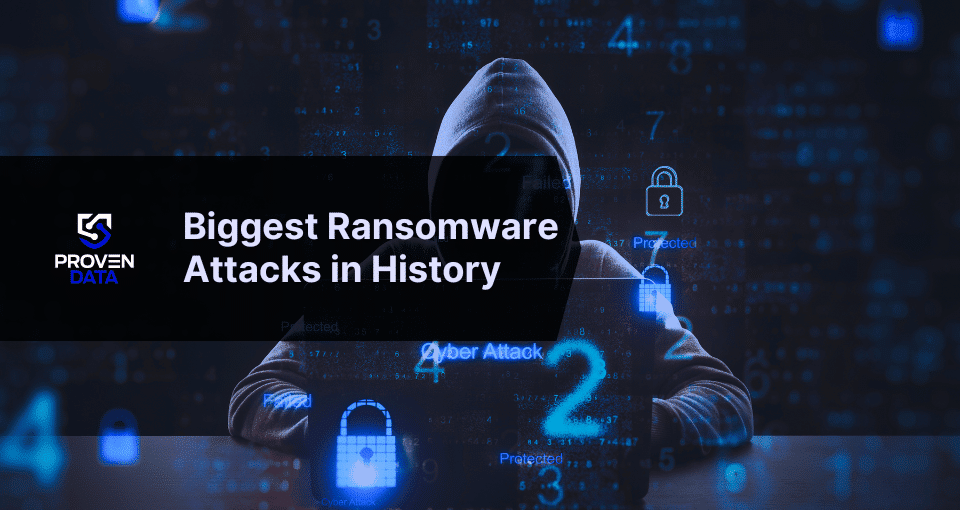The Global Positioning System (GPS) technology is integral to our daily lives. From navigation apps on our smartphones to fitness trackers and vehicle systems, GPS is everywhere. But beyond everyday uses, GPS has become a crucial digital forensics tool. GPS forensics is the specialized field of extracting, analyzing, and interpreting location data from GPS-enabled devices for investigative or legal purposes. It can provide crucial evidence in criminal investigations, civil litigation, and corporate inquiries by reconstructing movements, establishing timelines, and verifying or refuting location-based claims.
This comprehensive guide explores what GPS forensics, its importance, applications, and challenges are.
What is GPS and how does it work?
GPS, or Global Positioning System began as a U.S. military project in the 1970s, but soon was authorized to be shared with civilian corporations. By 1988, Magellan Corporation introduced the first widely available handheld GPS receiver for civilian use, marking a turning point.
GPS systems use satellites to provide precise location and time information worldwide. It consists of three main components:
- Space Segment: A constellation of satellites orbiting Earth
- Control Segment: Ground stations that monitor and control the satellites
- User Segment: GPS receivers in devices that process satellite signals
The technology has revolutionized various industries’ navigation, timing, and location-based services. Its applications range from personal navigation and asset tracking to scientific research and emergency services. The ubiquity and accuracy of GPS make it a valuable source of information in many fields, including digital forensics.
What is GPS forensics?
GPS forensics is a specialized branch of digital forensics that focuses on extracting, analyzing, and interpreting location data from GPS-enabled devices. It involves the scientific examination of GPS data to reconstruct movements, establish timelines, and provide location-based evidence, including:
- Waypoints: Specific locations saved by the user
- Tracks: Series of points representing a device’s movement over time
- Routes: Planned paths between multiple waypoints
- Geotags: Location metadata embedded in photos or other files
- Location history: Logs of places visited over time
- Timestamps: Date and time information associated with location data
When is GPS forensics needed?
GPS forensics is crucial when location information is critical to an investigation or legal proceeding. Its applications are diverse and span multiple domains, each with its unique requirements and challenges.
Criminal investigations
GPS forensics has become an indispensable tool for law enforcement agencies. One of its primary applications is in establishing or refuting alibis. By analyzing GPS data from a suspect’s devices, investigators can determine whether an individual was present at a crime scene or elsewhere during the offense. This information can be pivotal in either implicating a suspect or clearing an innocent person.
This service also enables investigators to track suspect movements before, during, and after a crime. This capability is particularly valuable in complex cases involving multiple locations or suspects. By reconstructing a suspect’s movements, investigators can piece together the sequence of events, identify potential accomplices, and uncover additional evidence.
The digital investigation and report are highly beneficial in kidnapping and missing persons as well. By analyzing the victim’s last known GPS coordinates or tracking the movements of potential suspects, investigators can narrow search areas and potentially locate the missing individual more quickly.
Civil litigation
In civil litigation, GPS forensics provides objective evidence that can be crucial in resolving disputes. One common application is custody disputes, which often involve disagreements about a parent’s involvement in a child’s life. GPS forensics can verify claims about visitation, school drop-offs, or other activities, providing the court with factual information to make informed decisions about custody arrangements.
Insurance fraud investigations frequently rely on GPS forensics to validate or disprove claims. For instance, in staged accidents or falsified theft reports, GPS data from the insured’s vehicle or mobile device can reveal discrepancies between the reported and actual locations at the time of the alleged incident.
Corporate investigations
Corporate investigations often leverage GPS forensics to protect company assets and ensure employee compliance. One common application is detecting unauthorized use of company vehicles. By analyzing GPS data from fleet vehicles, companies can identify personal use, unauthorized detours, or violations of company policies.
Tracking stolen assets is another crucial application of GPS forensics in corporate settings. Many valuable assets are now equipped with GPS trackers, allowing companies to quickly locate and recover stolen equipment. Even without dedicated trackers, GPS data from associated mobile devices can sometimes lead to the recovery of stolen items.
How does GPS forensics work?
GPS forensics is a complex and systematic process involving extracting, analyzing, and interpreting location data from GPS-enabled devices. This field combines technical expertise with investigative skills to uncover valuable information about an individual’s or device’s movements and activities. Let’s explore the key steps involved in GPS forensics in detail.
1. Data acquisition
The first step in GPS forensics is data acquisition. This phase involves accessing the GPS-enabled device or the relevant data source. The approach to data acquisition can vary depending on the nature of the investigation and the type of device involved.
This step often requires physically seizing devices such as smartphones, dedicated GPS units, or vehicle navigation systems. This process must be carried out meticulously to ensure the integrity of the data and maintain a proper chain of custody. Investigators must be careful to preserve the device’s state.
Cooperation from service providers or device manufacturers is sometimes necessary to obtain encryption keys, access proprietary data formats, or gain insights into how location data is stored and processed on specific devices or platforms.
2. Data extraction
The data extraction step involves using specialized tools and techniques to retrieve the GPS data from the device or data source.
Logical extraction is often the first approach, where accessible data is extracted from the device using its normal communication protocols. This method is less invasive and can retrieve significant data, including current and historical location information.
In cases where data has been deleted or is not readily accessible, physical extraction techniques may be employed. This more invasive method bypasses the device’s operating system to access the storage media directly. It can recover deleted or hidden data that might not be available through logical extraction.
Many GPS-enabled devices store location information in proprietary data formats. To extract meaningful data, forensic experts must be skilled at decoding these formats, which often requires specialized software tools and a deep understanding of various GPS systems and data structures.
Accessing encrypted or password-protected information is another challenge in data extraction. Forensic experts may need to employ various decryption techniques or work with device manufacturers to bypass security measures and access protected GPS data.
3. Data processing and analysis
After extraction, the raw GPS data must be processed and analyzed to derive meaningful insights.
The first step in this phase is often converting raw GPS data into readable formats. GPS data is typically stored in binary formats or proprietary structures that must be translated into human-readable information, such as latitude and longitude coordinates, timestamps, and other relevant metadata.
Creating visual representations of the GPS data is a powerful way to analyze movement patterns and timelines. Forensic experts often use mapping software to plot locations on interactive maps, creating a visual narrative of the subject’s movements. Timeline visualizations can help investigators understand the sequence of events and identify patterns or anomalies in the subject’s behavior.
Correlating GPS data with other forms of digital evidence is a critical aspect of the analysis phase. By cross-referencing location data with call logs, text messages, social media activity, or surveillance footage, investigators can build a more comprehensive picture of the subject’s activities and validate the GPS information against other sources of evidence.
4. Interpretation and reporting
The final stage of GPS forensics involves interpreting the processed data to draw meaningful conclusions and preparing detailed reports for legal or investigative purposes.
Reconstructing movement patterns and timelines is a key aspect of this phase. Forensic experts analyze the processed GPS data to create a coherent narrative of the subject’s movements, identifying significant locations, frequent routes, and deviations from normal patterns.
Assessing the reliability and accuracy of the GPS data is an essential part of the interpretation process. Forensic experts must consider factors such as signal strength, potential sources of interference, and the limitations of the GPS technology used. This assessment helps determine the confidence level of the conclusions drawn from the data.
Finally, preparing detailed reports is critical for communicating the findings of the GPS forensics analysis. These reports must be comprehensive, clear, and understandable to non-technical audiences, as they may be used in legal proceedings or to inform further investigative actions. The reports typically include explanations of methodology, data visualizations, key findings, and expert interpretations of GPS evidence.
The role of GPS forensics in digital forensics
GPS forensics plays a crucial role in the broader field of digital forensics, complementing and enhancing other areas of investigation. Its integration with various branches of digital forensics services provides a more comprehensive view of digital evidence.
Integration with mobile device forensics
GPS forensics is often closely integrated with mobile device forensics. Smartphones and tablets typically store a wealth of location data from dedicated GPS apps and other applications that use location services. This integration allows investigators to correlate location data with other digital evidence on mobile devices, such as call logs, text messages, and app usage data. For example, an investigator might be able to link a suspect’s location at a specific time (derived from GPS data) with a phone call or text message sent at that same time and location.
Enhancing computer forensics
GPS data can also enhance computer forensics investigations. Many people sync their mobile devices with their computers or use cloud services that store location data. Experts can gain valuable insights into a user’s movements and activities by analyzing GPS data from synced devices or cloud backups during a computer forensics investigation.
Supporting network forensics
In network forensics, GPS data can provide crucial context to network activities and potential cyber-attacks. By correlating network events with physical locations, investigators can better understand the nature and origin of network activities. For instance, GPS data might help identify the physical location from which a cyber attack was launched or track the movement of a device involved in suspicious network activities.
Challenges and complexities in GPS forensics
While GPS forensics is a powerful investigative tool, it also comes with challenges and complexities. These challenges range from technical issues to legal concerns and interpretation difficulties. Understanding these complexities is crucial for forensic experts to ensure the accuracy and reliability of their findings.
Technical challenges
One of the primary technical challenges in GPS forensics is device diversity. The market is flooded with a wide variety of GPS-enabled devices, each with its own unique data storage formats and extraction methods. This diversity requires forensic experts to constantly adapt their techniques and stay updated with the latest technologies. For instance, a forensic expert may need different approaches to extract data from an Android smartphone, an iOS device, a dedicated GPS unit, and a vehicle’s infotainment system. Each of these devices may store GPS data in different formats, use different encryption methods, and require different tools for data extraction.
Data volatility is another significant technical challenge. GPS devices often have limited storage capacity and tend to overwrite older data with new information. This means that crucial evidence can only be recovered if the data is acquired on time. For example, if a crime occurred a week ago, but the GPS device only stores data for the past three days, vital location information may have already been overwritten. This makes rapid response and timely data acquisition critical in GPS forensics investigations.
Encrypted data presents yet another hurdle for forensic experts. Many modern devices use sophisticated encryption techniques to protect user data, including GPS information. While this benefits user privacy, it can significantly complicate data extraction and analysis for forensic purposes. Experts may need to employ advanced decryption techniques, work with device manufacturers, or use specialized forensic tools to access encrypted GPS data.
Legal and privacy concerns
The collection and analysis of GPS data in forensic investigations often raise significant legal and privacy concerns. In the United States, the Fourth Amendment protects individuals against unreasonable searches and seizures, which extends to collecting GPS data. Law enforcement agencies typically need a warrant to access GPS data from a suspect’s device, and the scope of such warrants can be subject to legal challenges. The landmark Supreme Court case United States v. Jones (2012) established that attaching a GPS tracking device to a vehicle constitutes a search under the Fourth Amendment, highlighting the constitutional implications of GPS tracking.
Data ownership is another complex issue in GPS forensics. Questions often arise about who owns the GPS data and who has the right to access it. For example, in cases involving company-issued devices or vehicles, there may be disputes about whether the employer or the employee has rights to the GPS data. Similarly, data stored on cloud servers raises questions about whether the data belongs to the user, the cloud service provider, or potentially the device manufacturer.



